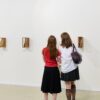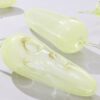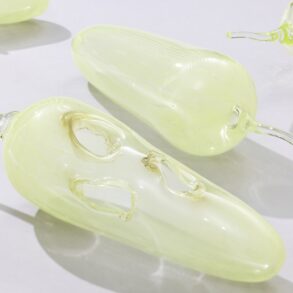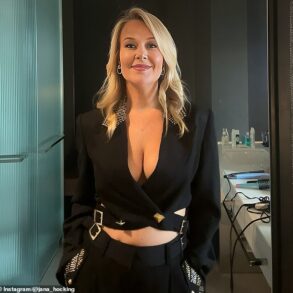In short:
Tasmania’s Museum of Old and New Art (Mona) has filed its appeal against a tribunal decision that found it discriminated when it refused a New South Wales man entry to its women-only Ladies Lounge.
Former Tasmanian anti-discrimination commissioner and human rights lawyer Robin Banks says Mona has strong grounds upon which to appeal against the decision.
What’s next?
The appeal will be heard in the Supreme Court in Hobart, with a hearing date yet to be set.
Tasmania’s Museum of Old and New Art (Mona) will argue about the “supremacy of men” in the Supreme Court in a bid to re-open its women-only art installation the Ladies Lounge.
Mona closed the Ladies Lounge earlier this year when the Tasmanian Civil and Administrative Tribunal (TASCAT) found it had discriminated against a man by not allowing him entry to the space.
Court documents show Mona is appealing the decision on 12 grounds, including that the tribunal failed to consider that the Ladies Lounge artwork sought to redress current and ongoing gender imbalance including:
- The continued existence of spaces associated with power such as elite men’s clubs
- That power in the world lies with men
- The supremacy of men generally
- The societal disadvantage of women
During the tribunal hearing, Mona curator and artist Kirsha Kaechele described the Ladies Lounge as a “room enclosed by green silk curtains, watched over by a concierge who welcomes women and denies entry to men”.
After the April tribunal decision, the museum was given 28 days to stop refusing entry to men. Instead, Mona chose to close the lounge “for reform”.
Kaechele moved three of the artworks she had said “spectacularly demonstrate Picasso’s genius” to a female toilet.
In another twist, after questions from a Guardian journalist and the Picasso Administration, Kaechele revealed the artworks were not by Picasso, but that she had created them.
Mona has confirmed to the ABC that the forged Picassos have been removed from the toilets and are no longer on display.
The family of the Spanish painter has said “[w]hile we can only regret this situation and the current overexposure, we believe that this matter is now closed”.
Different interpretations of discrimination law
Tasmania’s anti-discrimination laws prevent someone being treated differently based on an attribute or characteristic like gender, sexual orientation, race, religion or disability.
But there are exceptions.
A section of the act about “equal opportunities”, allows positive discrimination where the discrimination levels the playing field or gives opportunity to a disadvantaged group.
Former Tasmanian anti-discrimination commissioner and post doctoral fellow at the University of Tasmania’s law faculty Robin Banks believes there are “strong grounds” New South Wales Man Jason Lau did not experience unlawful discrimination when he was refused entry to the Ladies Lounge.
But Dr Banks said if he did, the artwork should fall under the exception as something that promotes equal opportunity.
Dr Banks has written an essay on the issue for the Alternative Law Journal with Dr Alice Taylor from Bond University and Professor Beth Goldblatt from Sydney’s University of Technology.
“There is a strong argument, we think, that Lau actually did have a very rich experience of the art,” she said.
Mr Lau had complained in the tribunal hearing that he paid the $35 entry fee to Mona but didn’t get to experience what was inside the Ladies Lounge.
“Art isn’t something you go into, it’s something you experience,” Dr Banks said.
The tribunal did not see it that way.
“The unfavourable treatment of Mr Lau extended beyond entry to the space, as an artwork in itself, to the inability to experience the artwork within it,” the tribunal’s decision reads.
Dr Banks said while Mr Lau was treated differently in terms of not being able to pass through a doorway, he experienced the piece as intended.
“It was that idea that the world does treat women differently to men, and that experience of exclusion triggers an emotional response, it’s distressing,” she said.
“I guess he didn’t experience it quite the same extent as women do, because it was a one-off experience for him, whereas for many women it’s not a one off, it’s an ongoing thing.”
Dr Banks said different people experienced art differently.
“A blind person doesn’t say ‘that piece of art is discriminating against me because I can’t experience it in the same way other people can’,” she said.
“And similarly, a deaf person doesn’t say, ‘not being able to hear a concert or a musical performance is unlawful discrimination against me’.
“It’s an installation piece, and how you engage with that installation piece will be different for everyone.”
Is the Ladies Lounge a place of equal opportunity?
Mona’s lawyers will push the argument that the Ladies Lounge was designed to promote equal opportunity by showcasing an artwork by a female artist, and providing the experience of negative discrimination for men and positive discrimination for women.
The court documents show it will be argued that is it a space “free from the supremacy of men, imbalance of power and the societal disadvantage that exists for women outside this space”.
Dr Banks said the tribunal focused on the disadvantage needing to be very specific, and she disagrees with the tribunal’s interpretation of the law.
“The general disadvantage that women experience and the general exclusion from power in places that women experience is a disadvantage,” she said.
She said the Ladies Lounge promoted equal opportunity “by educating people about that experience”.
“It’s continuing to educate people about that experience of exclusion, and one of the ways you help people change is by helping them to walk a mile in somebody else’s shoes.”
According to the appeal documents, Mona will ask the Supreme Court to set aside the tribunal’s decision that men must be allowed entry into the space.
A hearing date is yet to be set.
Loading…
This post was originally published on this site be sure to check out more of their content







